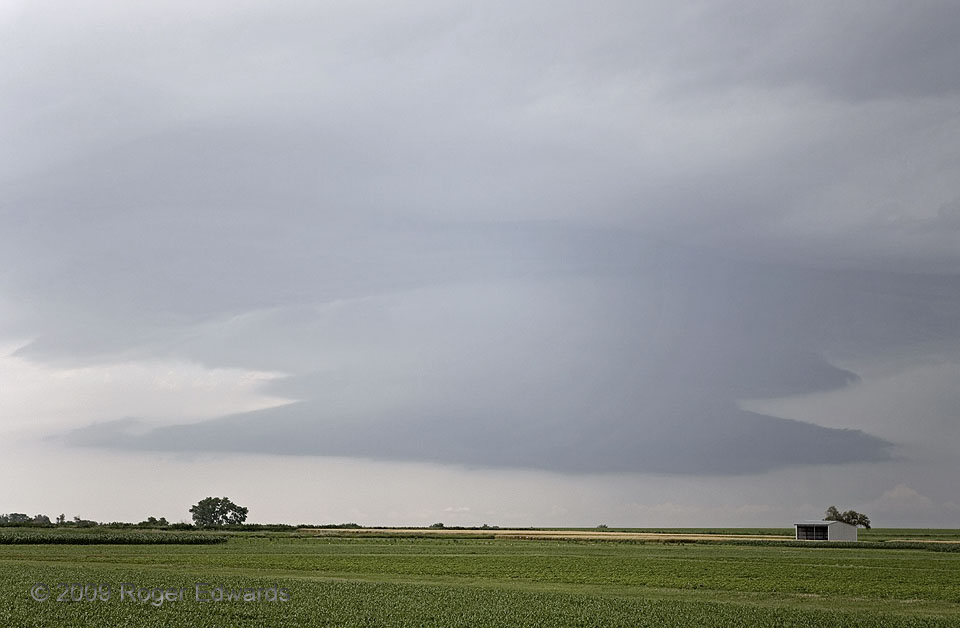Operational meteorologists consider a thunderstorm “elevated” if its inflow is not directly rooted at the surface. In other words, the storm is tapping a plume of moist and unstable air above, not at ground level. This usually happens atop a relatively cool, stable air mass, like one might find on the cold side of a front, behind an outflow boundary, or atop an inversion caused by strong nighttime cooling of the surface. Elevated thunderstorms that develop that way aren’t often seen, usually because of intervening low clouds or rain common to such air masses. This photo, therefore, offers quite an uncommonly clean look at a newly formed, elevated supercell. Somewhat starved for buoyant air, its banded, plated features looked fairly characteristic of a surface-based supercell whose inflow experiences forced lifting, but softer and more diffused. This storm, occurring before solar noon, drew its inflow from north of a warm front, in an air mass of favorable deep-layer shear. It would move eastward across northern Kansas, and eventually cross the warm front into strongly heated, very moist and surface-based air, producing a brief tornado.
2 WSW Belleville KS (17 Jun 9) Looking NW
39.8129, -97.6708
